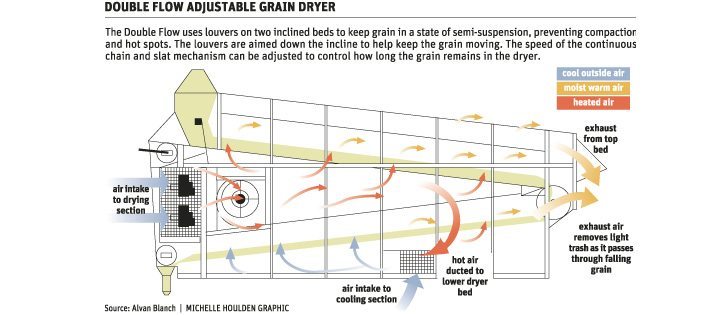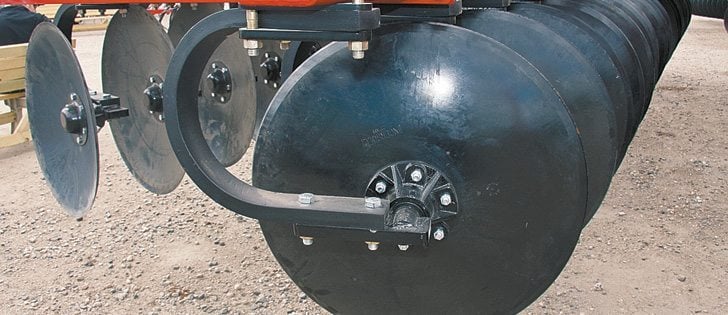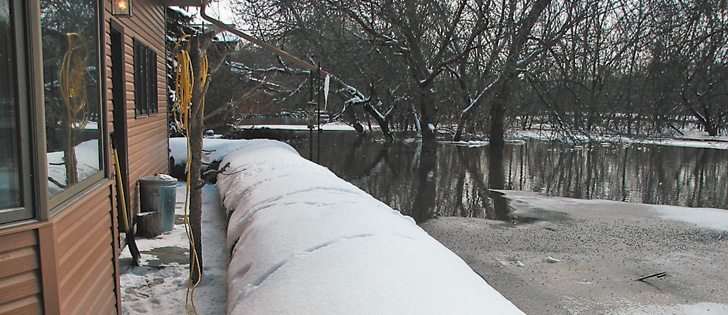Give a little, get a little. A surprising study out of northern Alberta shows biodiversity can work that way.
Researchers Lora Morandin and Mark Winston found that leaving up to 30 percent of land uncultivated in an agricultural landscape can bring greater profits from the cropland.
Farmers often consider the natural patches in their landscape, the sloughs and bush and woodlots, as waste areas. Conservationists tend to view those same areas as oases in a desert of mono-cropping.
The Morandin and Winston study suggests that native bees and other pollinators are critically dependent on those natural patches.
Read Also

Fusarium head blight mycotoxin detector in the works
A PhD student at the University of Saskatchewan has been working on developing a method of detecting fusarium damaged kernels to ease the struggles of producers, agronomists and industry.
The researchers compared canola plants in organic, conventional non-genetically modified and GM canola fields in the La Crete, Alta., region.
They added supplemental pollen to some of the canola flowers in each field. The fate of these flowers was compared to flowers that were not hand pollinated.
If the plants were already receiving all the pollen they needed, the additional hand pollination should have made no difference.
The researchers found different results in the different types of fields.
Hand pollination made a big difference in the GM canola fields, reducing the number of siliques that had no seed and the number that had few seeds.
It increased seed production by 33 percent over plants without the hand pollination. This indicated that canola in the GM fields was experiencing a “pollen deficit.” The native pollinators were not keeping up with demand.
The results were the same in non-GM conventional canola fields but not as severe. Supplemental hand pollination increased seed set by 21 percent. The conventional field, like the GM field, was experiencing a pollen deficit. Pollinators were not sufficient to meet the yield potential of the crop.
Results were different in the organic field. Hand pollinated and open pollinated flowers produced similar numbers of seeds. There were no differences between them in the number of siliques with no seeds or few seeds.
In other words, the experimenters did not improve on the performance of the native pollinators.
Morandin and Winston then sampled the fields for insects, using sweep nets and pan traps.
Using the same sampling protocol in each field, they found 342 bees in the organic fields, 230 bees in the conventional fields and 101 bees in the GM fields.
Perhaps predictably, they found that where there were more bees, there was less pollen deficit. In science-speak, this was a highly significant relationship.
Why was pollination more effective in organic fields? Because they had more bees. Why were there more bees in organic fields? Organic fields differed in several ways from the other fields.
The organic canola was Polish canola while conventional and GM fields were seeded to Argentine canola.
Organic fields were smaller in size, 50 to 125 acres, rather than the 160 acres of the conventional and GM fields. And conventional and GM canola received an insecticide treatment during bloom, while organic fields did not.
As it turns out, none of these factors fully explain the data. The Polish canola requires pollination to set seed. The Argentine canola can set seed without pollination, but pollination increases seed set.
If anything, the organic canola was more dependent on pollination and would have been more vulnerable to pollen deficit.
The researchers found no differences in pollen deficit between different locations in the fields.
Pollen deficits in GM and conventional fields were as severe near the field edge as they were in the centres of the field, suggesting that at this scale, smaller fields were not at an advantage for pollination.
Although it seems logical to assume that insecticide treatments hurt bees, this could not account for the difference between GM fields and conventional fields because both received one treatment of the same insecticide.
The researchers noted that bees are dependent on more than canola for nectar and pollen.
Canola is in flower for only a portion of the life span of bees. They need alternate food sources before and after the canola flowers.
The authors suggested that perhaps the difference among fields was in their weediness. Organic fields had a more abundant and diverse weed community. GM fields had better weed control than conventional fields.
Weeds can provide crucial forage material for bees, and if the weed community is diverse, they can provide this forage over the life span of the bees.
So what is the take home message for producers? Leave enough weeds to nourish your bees? Yes, perhaps, though many producers would probably feel more comfortable using honey bees for supplemental pollination.
Perhaps the larger truth in this study is about the vulnerability of pollinators in our agro-ecosystems.
Honey bee populations are being devastated by colony collapse syndrome, and we really don’t understand why that is happening. It would be prudent, even from a strictly crop yield perspective, to protect native pollinators. Reducing weeds seems to reduce pollinators and pollination.
Morandin and Winston conducted their study in an area that still had substantial amounts of natural habitat. They suggest that as more land is cleared, all bees will become scarcer.
In a follow-up study, the researchers looked at the value of uncultivated land around fields and found that it was crucial in maintaining native pollinators.
Native pollinators provide “free services,” which more than compensate for the loss of cropland.
According to Morandin and Winston, profit in a landscape was maximized at slightly more than 30 percent uncultivated land.
In other words, leave some room for the bees. They’ll pay you back handsomely.
The Xerces Society for Invertebrate Conservation offers a number of suggestions on how to best maintain and enhance bee habitat. Morandin and Winston suggest that this might be a profitable idea.
- Feb 15-18: Biofach trade show, Nuremberg, Germany, Julia, jbustos@ota.com
- Feb 21-23: Canadian organic science conference, Winnipeg, Joanna MacKenzie, jmackenzie@nsac.ca, 902-896-2249
- Feb 24: Organic Federation of Canada annual general meeting, Winnipeg, info@organicfederation.ca
- Feb. 23-25: Growing local conference, Winnipeg, growinglocal@foodmattersmanitoba.ca
- Feb 24-26: COABC organic conference, Innovations, Chilliwack, B.C., conference@certifiedorganic.bc.ca
- Feb 28: Webinar, Making the Transition to Small Scale Organic Produce Farming, COG, outreach@cogwaterloo.ca
- March 2-3: Organic Alberta Workshop, Lethbridge, vkhanel@gmail.com
- March 5: Organic Alberta Workshop, Camrose, vkhanel@gmail.com
- March 8: Organic Alberta Workshop, La Crete, Alta., vkhanel@gmail.com
- March 9-10: Direct farm marketing conference, Gimli, Man., directfarmmarketing@gmail.com
- March 16: Opportunities in the Organic Marketplace and Manitoba Organic Alliance annual general meeting, Headingly, Man., info@manitobaorganicalliance.com
- March 23: Saskatchewan Organic Directorate annual general meeting, Saskatoon, heather@saskorganic.com
- April 24: Great Manitoba Food Fight, Brandon, jeff.fidyk@gov.mb.ca
- April 30-May 12: Organic crop inspection training and organic livestock inspection training, Brandon, peterseM@Assiniboine.net
- Morandin and Winston, 2005. Wild Bee Abundance and Seed Production in Conventional, Organic and Genetically Modified Canola. Ecological Applications 15: 871-881.
- Morandin and Winston, 2006. Pollinators provide economic incentive to preserve natural land in agroecosystems. Agriculture, Ecosystems & Environment 116: 289-292.
- The Xerces Society for Invertebrate Conservation, www.xerces.org.














